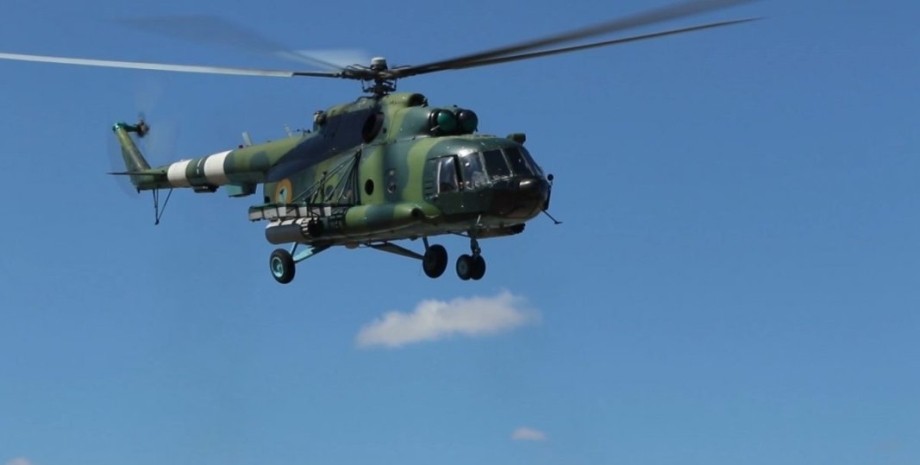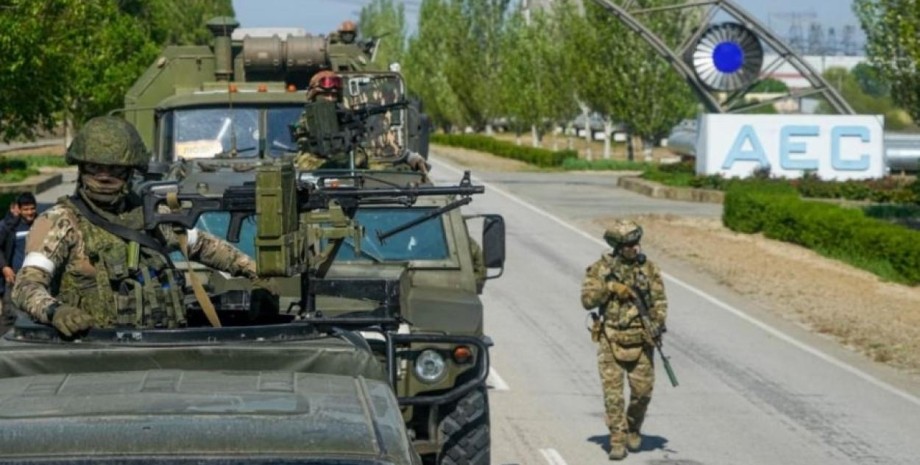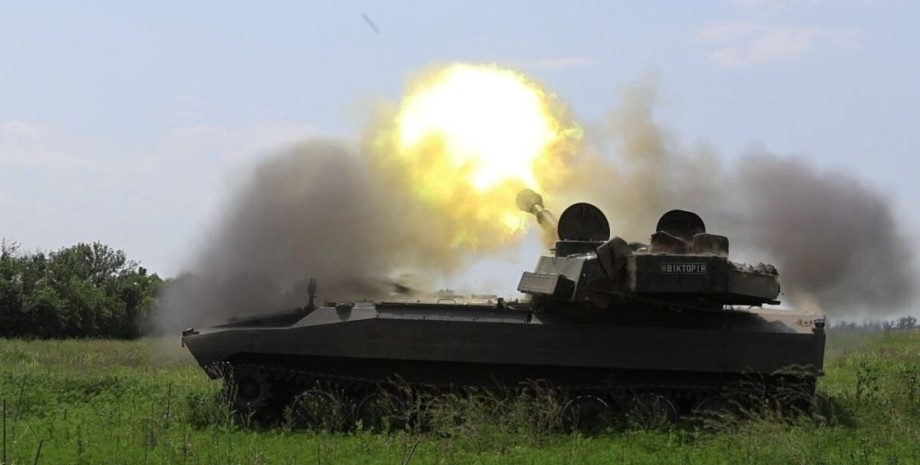
 By Natali Moss
By Natali Moss
In the previous article "Ukraine and the future of the offensive maneuver" Stephen Bidle denied the claim that the era of the domination of defenders had come. As he noted, the offensive maneuver against the prepared defense located in the depths of the territory has long been difficult. This is still yes.
In addition, successful counter -offenses of Ukraine in Kharkiv and Kherson regions - though not without mistakes and large costs, especially in the case of the latter - should refute the idea of the death of an offensive maneuver. It can still be successful in the proper preparation and use of forces, although it will take a lot of time and effort against a powerful opponent. Therefore, it was premature to advocate for significant restructuring of US Land Forces.
Of course, everything can change. But so far, the events in Ukraine indicate that six priorities for the modernization of the US Army are mostly justified (although the army leaders should pay more attention to logistics). Modern armed forces, like their predecessors, must maintain a flexible balance between offensive and defensive capabilities and not bet on one or the other.
Focus has translated the second article by Antulio Echivarria II about the modern problems of an offensive maneuver based on the experience of the Russian-Ukrainian war. There are several questions that US armies need to be resolved about logistics support for both offensive and defensive large -scale combat operations.
To do this, support should become a cornerstone of war, which will emphasize the strategic importance of logistics and ensure imperative for better integration of the American defense industrial base in the US restraint and defense strategy. Some of these issues may be resolved by amending its new Operational Statute (Field Statute 3-0 (2022) and Logistics Statute (Field Statute 4-0 (2019)).
The importance of logistics in the war zone than the deployment of troops, and to offer planners of operations basic hypothetical scenarios or historical examples of planning in the face of different logistics restrictions. Field statute 4-0 should clearly reduce the support of combat capability in the rank of war-for their part. -0 will imitate this example. Although the offensive maneuver will not die, the US Army will do some work on their approach to large -scale combat operations.
In fact, even if an offensive maneuver was impossible, and the war in Ukraine would be a war for exhaustion that resembles a first world war wars, large -scale fighting would still have a place. They will not necessarily be associated with big breakthroughs and hobbies There are some areas of the territory, but will still require a significant cost of ammunition as well as other military speakers.
For this reason, the army would be a good close look at what some analysts call the "crisis of artillery ammunition. " According to the data, Ukrainian armed forces spend an average of 100 thousand 155 mm artillery ammunition monthly. However, the US defense industry can only put 14,000 shells per month, although over the next two years this number should increase to 20 thousand shells per month.
A similar situation is observed with regard to "Stingers", Javelins ", Himars and other most important types of weapons. Simply put, the rate of consumption of material means in this war, especially artillery ammunition, ahead The US government promptly concludes new contracts to enable the industry leaders to eliminate the breaks between production and consumption. But the defense industry may take months, and some cases and years to bring production to the right scale.
Meanwhile, the key factor for Ukrainians is the material factor support from the event. Without it, the Ukrainian armed forces, no matter how brave and skillful they may be, will not be able to conduct large -scale fighting necessary to return territories lost as a result of Russian aggression. This crisis has not been given enough attention, since Russian reserves of military interstit including artillery ammunition, also end.
As a result, both parties will probably have to reduce the pace of operations and adjust their scale. However, for Ukrainians, such adjustments lead to lost possibilities. Reducing the rate of deliveries means the loss of valuable operational impulse and gives the Russians time to re -equipment and repair.
At the same time, criminal Russian rockets of a distant radius and artillery strikes in the Ukrainian civilian population and critical infrastructure continue, thereby increasing the number of victims among civilians. Obviously, some of the main causes of this logistics crisis are beyond the competence of the army. But she can do a lot. This is an important shift. But the field charter 3-0 provides for the logistics required for large-scale fighting.
As the crisis with the starting ammunition has shown, it is a dangerous assumption. So far, no one has checked the US ability to transport material through the Atlantic Ocean and Central and Eastern Europe under fire, although Russians have the opportunity to stop logistics chains throughout these supply lines. Another enemy, such as the People's Republic of China, may also decide to attack US supply lines.
Research by the US Army Strategic Research Institute shows, China and Russia have already violated the US supplies chains through devastating cyberattacks. Thus, we cannot assume that the delivery of military property from the United States to the European or Pacific Fighting Theater will be guaranteed in the future conflict. This management is a commendable realistic and carefully processed document, which clearly recognizes the problems of fighting in the modern space.
In fact, the field charter 3-0 can envy such realism. But the field charter 4-0 can be improved. As explained in the family document, the Bulletin Defense of the Armed Forces 4-0 (2019), logistics refers to the sphere of support, which is "carried out through coordination, integration and synchronization of resources from strategic level to tactical in cooperation with our allies and international partners.
" However, unlike partnerships such as the British Army, the Field Statute 4-0 and the Bulletin Bulletin 4-0 classify combat support as a combat function, not as a principle of war. The combat function is simply a "group of tasks and systems that are united by a common purpose that commanders use to fulfill missions and educational tasks.
" In other words, the US Army disagrees with the UK army - one of its most consistent allies - the importance of the importance that it is supported by combat capability (the British call it stability). Oddly enough, the Russian army is the heir to the Soviet system, also considers logistics as a principle of war.
The United States United States usually become a nodal center for military interventions with the participation of alliance partners or coalition, so they are responsible for synchronizing partners' efforts. In the event of a difference in value given to such an important issue as logistics, the US Army, as the logistics hub of the Joint Forces and their international partners, should be rounded in the greater, not lesser direction.
Supporting the principle of war solves this problem and recognizes the role of logistics as an indispensable condition for strategic planning. Of course, the US military is different about the principles of war. Even the definition of the principle given by the US Army: "A comprehensive and fundamental rule or assumption of central importance that determines how the organization or department approaches operations", too cumbersome. However, it sets the correct message.
If you cleanse the definition of the word branch, stability can be as production capacity together with the speed of the flow, or the delivery of consumables to the theater of fighting. It is essentially a strategic imperative. However, the disadvantage of this term is that it means maintaining the status quo in terms of deliveries, not increasing on the eve of new or large-scale operations.
Despite this, the preservation of the term "logistical support" is better than the invention of a new loud term, such as "logistics is exactly the term" or "accurate" logistics that draws more attention to the formulation than the idea underlying. It will be useful to make a difference between "operational provision" concerning logistics at the theater of combat, and "strategic support" concerning logistics flows outside the theater of war or before its appearance.
Reliable logistics flow gives stability to US security guarantees, bringing political value to strategic provision, which in some cases exceeds its military value. Conversely, breaks in US supply chains or the penetration of malicious entities can undermine confidence in Washington. Moreover, strategic support creates critical political levers, allowing Washington to regulate logistics flows to influence the actions of allies and partners.
American politicians have long been involved in the US industry leaders in discussing strategic issues. It is necessary to draw up and periodically update plans with them, as US combat commands do regarding military plans in case of unforeseen circumstances. Increasing stability to the strategic imperative can help to avoid such gaps in the future and at the same time promote the integration of America's defense and industrial base with US national security strategies.
As the main supporter of the operational support of the Joint Forces and the Office, which is responsible for the material and technical support of the international partners of America, the US Army should be the loudest voice that promotes this integration both within the country and abroad. The raised support crisis indicates a serious gap in the concept of integrated restraint of the US Department of Defense, undermining confidence in it.
Simply put, the defense industrial base of America was fully integrated into the defensive strategies and strategies of deterrent to Washington - which, for its part, led to a lag in production. This lag has become possible in spite of more than two decades of theorizing and conducting military games, as well as confrontation at European and Pacific theaters.
The event can develop as many defense theories and restraints, but, as history has shown, production capacity, combined with the ability to deliver military materials to where they are needed (strategic and operational support), can go a long way to victory in war. The ability to win the war itself prevents them. In other words, integrated defense will be required for integrated restraint.
In general, the future of large -scale combat operations, obviously, depends on the future strategic and operational support. Therefore, the army should better synchronize the field statute 3-0 and the field statute 4-0. The latter should especially help eliminate the gap between strategic and operational support, bringing logistics into the principle of war, as the main allies (and enemies) of America did.
The first document must change the prerequisite for the inviolability of the US logistics to predict alternative situations. This does not mean that the United States should start the thoughtless mass production of military speakers or ignore other problems, such as providing the combined forces with sufficient mobile logistics.
Rather, it is an argument in favor of a better integration of a defense-industrial base with the US national strategies, which is focused on the logistics experience of the army. Instead of concluding that the era of the offensive maneuver is over, it is time to return logistics to the discussion about large -scale combat operations. Antulio H. Echvarry II is a professor at the US Army College and the editor -in -chief of the US Army Publishing House.




















Všetky práva vyhradené IN-Ukraine.info - 2022